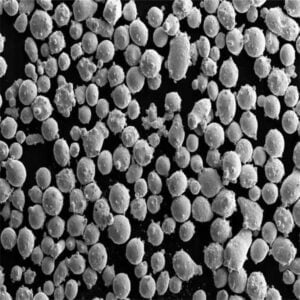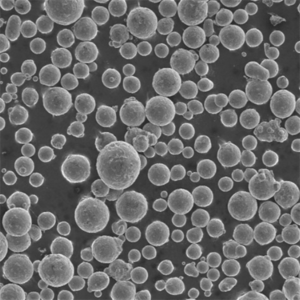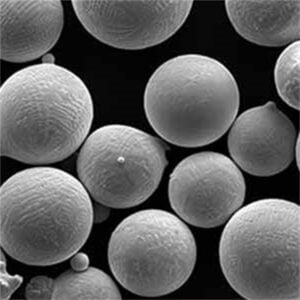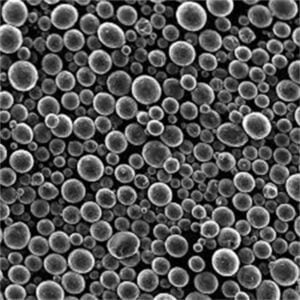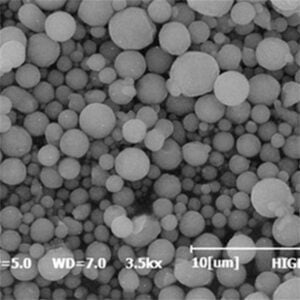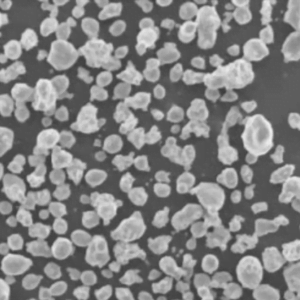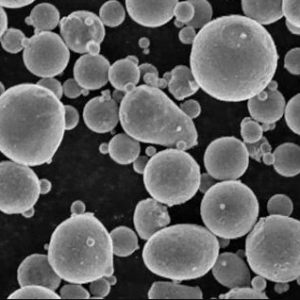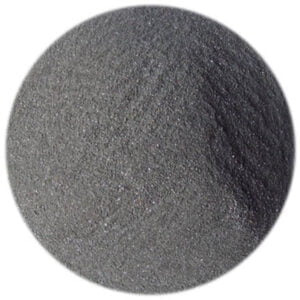Dodavatelé prášku pro 3D tisk
Obsah
Prášek pro 3D tisk je surovinou, která umožňuje aditivní výrobní technologie na bázi prášku, jako je selektivní laserové slinování (SLS), přímé laserové slinování kovů (DMLS), tavení elektronovým paprskem (EBM), tryskání pojiva a další. Existuje rostoucí počet poskytovatelů, kteří nabízejí tyto speciální prášky.
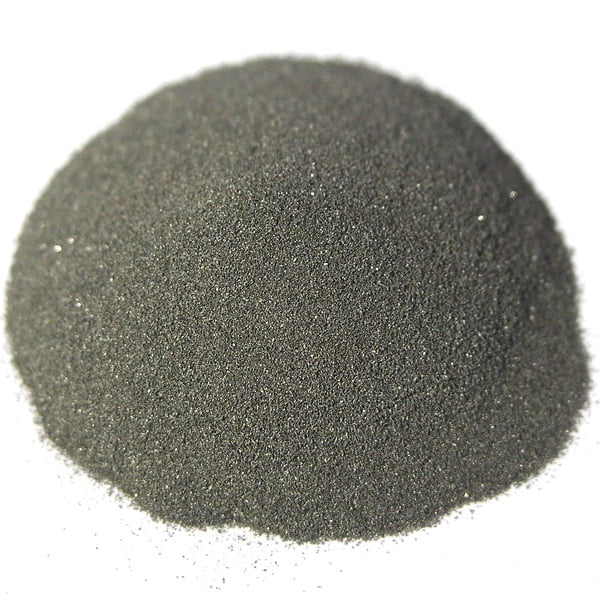
Typy výrobců 3D tiskového prášku
Na tomto trhu působí několik hlavních kategorií společností:
| Typ prášku | Proces tisku | Vlastnosti materiálu | Aplikace | Výhody | Nevýhody |
|---|---|---|---|---|---|
| Polymerní prášky | Selektivní laserové slinování (SLS) | – Různé termoplasty (Nylon, PA, PA 12 atd.) – Vysoká pevnost a odolnost – Dobrá tepelná odolnost – Široká škála dostupných barev | – Funkční prototypy – Konečné díly – Výroba přípravků a přípravků – Automobilové komponenty – Spotřební zboží | – Vysoká přesnost a rozlišení – Vynikající mechanické vlastnosti – Podporuje složité geometrie – Vyžaduje minimální dodatečné zpracování | – Relativně vysoké náklady na tisk – Omezený výběr materiálu ve srovnání s jinými metodami |
| Kovové prášky | Selektivní laserové tavení (SLM) | – Nerezová ocel – Slitiny titanu – Inconel – Slitiny hliníku – Vysoký poměr pevnosti k hmotnosti – Vynikající tepelná odolnost – Odolnost proti korozi | – Letecké komponenty – Lékařské implantáty – Zubní protetika – Vysoce výkonné nástroje a raznice – Šperky | – Nabízí výjimečné mechanické vlastnosti pro náročné aplikace – Umožňuje vytváření lehkých a složitých kovových dílů | – Vyžaduje řízenou atmosféru pro tisk – Vysoké náklady na materiál a vybavení – Nutná speciální bezpečnostní opatření |
| Anorganické prášky | Tryskání pojiva | – Písek (pro odlévání) – Keramika (oxid hlinitý, oxid zirkoničitý) – Sklo – Biokompatibilní materiály (hydroxyapatit) – Vysoký bod tání – Široká škála vlastností materiálu v závislosti na prášku | – Formy pro lití do písku – Výroba komplexních keramických a skleněných komponentů – Lékařské a stomatologické aplikace – Kostní implantáty | – Relativně nízké náklady na tisk – Široká škála dostupných materiálů – Nabízí dobré detaily a rozlišení | – Nižší pevnost ve srovnání s některými jinými metodami 3D tisku – Vyžaduje dodatečné kroky následného zpracování (např. slinování) |
| Kompozitní prášky | Multi-Jet Fusion (MJF) | – Kombinace polymeru a dalších materiálů (např. kov, keramika) – Nabízejí jedinečné vlastnosti založené na směsi kompozitu | – Funkční prototypy – Lehké a pevné komponenty – Výrobní pomůcky | – Umožňuje tvorbu dílů s vlastnostmi na míru – Nabízí dobrou pevnost a tepelnou odolnost | – Omezená dostupnost kompozitních práškových materiálů – Proces tisku může být složitý |
Přední světoví dodavatelé 3D tiskového prášku
Mnoho z největších společností vyrábějících kovový prášek nyní nabízí různé druhy 3D tisku:
| Dodavatel | Zaměření materiálu | Klíčové produkty | Aplikace | Reputace |
|---|---|---|---|---|
| Prášková metalurgie GKN | Kovy (slitiny niklu, slitiny titanu, nástrojové oceli) | Prášky Osprey® – plynem atomizované prášky pro vynikající tekutost a potiskovatelnost | Letecký průmysl (lopatky turbín, součásti podvozku), lékařství (zubní implantáty), automobilový průmysl (odlehčené součásti) | Lídr v oboru kovových prášků, známý pro stálou kvalitu a široké materiálové portfolio |
| Sandvik AB | Kovy (nerezové oceli, nástrojové oceli, superslitiny) | Prášky Höganäs AM – nabízené v různých velikostech částic a chemických složeních | Letectví (komponenty motorů, součásti raket), lékařství (protetické implantáty), energetika (plynové turbíny) | Známý pro vysoce výkonné kovové prášky s vynikající potiskovatelností napříč různými technologiemi 3D tisku |
| Arkema | Polymery (PA 12, PA 11, TPU) | Kepstan® PA prášky – bio-založené a udržitelné polyamidové prášky | Automobilový průmysl (interiérové díly, prototypy), spotřební zboží (sportovní oblečení, elektronika), zdravotnictví (zařízení na doručování léků) | Průkopnické materiály na biologické bázi pro 3D tisk, které nabízejí udržitelnou alternativu pro různé aplikace |
| BASF SE | Polymery (PA 12, PA 6, TPU), Kovy (nerezová ocel, hliník) | Materiály Ultrafuse® a Adsorb – nabízejí řadu vlastností pro různé aplikace | Automobilový průmysl (funkční prototypy, lehké komponenty), letectví (části kabiny), lékařství (chirurgické nástroje) | Diverzifikovaný chemický gigant poskytující komplexní portfolio prášků pro polymerový i kovový 3D tisk |
| Evonik Industries AG | Polymery (PA 12, PA 6, PEEK), Aditiva kovů | INFINAM® prášky – vysoce výkonné a aplikačně specifické materiály | Lékařské (ortopedické implantáty, chirurgické nástroje), letectví (konstrukční komponenty), průmyslové (přípravky a přípravky) | Odborník na materiálové vědy nabízející inovativní prášky s vlastnostmi na míru pro náročné aplikace |
| Tesařská technologie | Kovy (slitiny niklu, slitiny titanu, speciální slitiny) | Atomizované prášky pro vynikající výkon v náročných prostředích | Letectví (komponenty pro vysoké teploty), lékařství (implantáty vyžadující vysokou biologickou kompatibilitu), olej a plyn (části odolné proti korozi) | Výrobce speciální oceli známý pro vysoce kvalitní prášky pro kritické aplikace |
| Technologie LPW | Kovy (slitiny niklu, slitiny titanu, slitiny hliníku) | Prášky ScRAM (Scalable Rapid Additive Manufacturing) – optimalizované pro LPW 3D tiskové systémy | Lékařské (protetické končetiny, zubní implantáty), letectví (konstrukční součásti nosných raket) | Dodavatel kovových prášků se silným zaměřením na technologii LPW, nabízející prášky specifické pro aplikaci |
| Höganäs AB | Kovy (ocel, železo, měď) | AM prášky se zaměřením na nákladovou efektivitu a recyklovatelnost | Automobilový (sériově vyráběné díly), spotřební zboží (šperky, dekorativní předměty), průmyslové (nářadí, funkční prototypy) | Přední poskytovatel kovových prášků pro nákladově citlivé aplikace, prosazující udržitelné postupy |
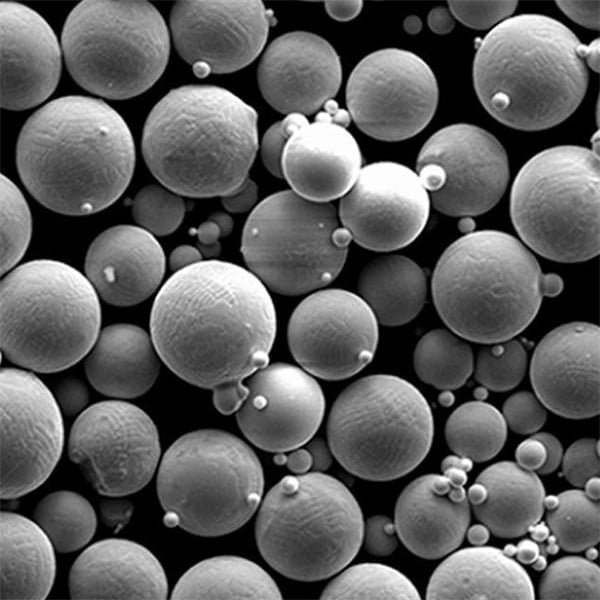
Hlavní dodavatelé polymerních materiálů pro 3D tiskový prášek
Většina polymerního prášku pro aditivní výrobu stále pochází od velkých chemických výrobců:
| Dodavatel | Zaměření materiálu | Klíčové produkty | Aplikace | Silné stránky | Úvahy |
|---|---|---|---|---|---|
| Prášková metalurgie GKN | Kovy | Slitiny niklu, slitiny titanu, nerezová ocel, slitiny hliníku | Letectví, automobilový průmysl, lékařské implantáty | – Proslulý vysoce kvalitními sférickými prášky – Rozsáhlé portfolio pro různé tiskové procesy (SLM, LPBF, EBM) – Silný závazek k výzkumu a vývoji | – Omezená dostupnost některých materiálů v menším množství |
| Sandvik AB | Kovy a polymery | Titan, nerezová ocel, nástrojová ocel, polyamid (PA) 12 | Letectví, lékařské implantáty, nástroje | – Přední poskytovatel plynem atomizovaných kovových prášků – Nabízí zakázková prášková řešení – Široký sortiment polymerních prášků pro selektivní laserové slinování (SLS) | – Zaměřte se především na kovové prášky, s menším výběrem polymerů |
| Arkema | Polymery | Polyamid (PA) 12, polyamid 11 (PA11), biokompatibilní PA prášky | Automobilový průmysl, spotřební zboží, zdravotnické prostředky | – Průkopnické inovace v oblasti vysoce výkonných polymerních prášků – Materiály speciálně navržené pro různé aplikace SLS – Silné zaměření na lehká a udržitelná řešení | – Omezená nabídka kovových prášků |
| BASF SE | Kovy a polymery | Slitiny niklu, kobaltchrom, polyamid (PA) 12, polymery odolné vysokým teplotám | Letectví, automobilový průmysl, chemické zpracování | – Rozsáhlé materiálové portfolio pro různé aplikace – Nabízí přizpůsobené práškové receptury – Odborné znalosti v oblasti výroby kovových a polymerních prášků | – Ceny mohou být v porovnání s některými konkurenty vyšší |
| Evonik Industries AG | Polymery a kovové přísady | Polyamid (PA) 12, polyetheretherketon (PEEK), fosforečnan vápenatý pro kostní implantáty | Lékařská zařízení, letecký, automobilový průmysl | – Specializuje se na vysoce výkonné polymery pro náročné aplikace – Biokompatibilní materiály pro lékařský 3D tisk – Nabízí kovové práškové přísady pro lepší potiskovatelnost | – Omezený sortiment prášků obecných kovů |
| Höganäs AB | Kovové prášky | Ocel, nerez, železo, měď | Aditivní výroba, vstřikování kovů (MIM) | – Přední výrobce atomizovaných kovových prášků – Konzistentní kvalita prášku a těsné rozdělení velikosti částic – Nákladově efektivní řešení pro různé aplikace | – Zaměřte se především na standardní kovové prášky s omezenými možnostmi přizpůsobení |
| Carpenter Technology Corporation | Kovy | Slitiny niklu, nerezová ocel, speciální slitiny | Letectví, ropa a plyn, lékařské implantáty | – Odbornost ve vývoji vysoce výkonných kovových slitin – Prášky optimalizované pro specifické tiskové procesy – Silné zaměření na vlastnosti materiálů a výkon | – Relativně menší objem výroby ve srovnání s některými většími hráči |
| LPW Technology Ltd. | Kovy | Slitiny niklu, slitiny titanu, slitiny hliníku, žáruvzdorné kovy | Letectví, lékařské implantáty, automobilový průmysl | – Nabízí prášky speciálně ověřené pro technologii LPBF – Úzká spolupráce s předními výrobci tiskáren – Zaměření na vlastnosti s vysokou hustotou a tekutostí | – Omezená dostupnost prostřednictvím vybrané sítě distributorů |
Distributoři a prodejci 3D tiskových prášků
Kromě přímého objednávání od výrobců existuje několik zprostředkovatelů dodavatelského řetězce:
Distributoři kovového prášku pro aditiva
| Společnost | Nesené klíčové materiály | Obsluhované zeměpisné oblasti |
|---|---|---|
| Severoamerický Höganäs | Kovové prášky od Höganäs a dalších | USA a Kanadě |
| Atlantik vybavení inženýrů | Široká škála železných a neželezných kovů | USA |
| Společnost Powder Alloy Corporation | Nikl, titan, hliník | USA |
| Americké prvky | Široká škála kovů a chemikálií | Globální |
| Technologie LPW | Výrobce a distributor | Evropa, Severní Amerika |
Tito větší distributoři nabízejí kromě získávání a dodávání materiálů služby s přidanou hodnotou, jako je skladování zásob, logistika a technická pomoc. Pomáhají propojit regionální nákupčí s předními světovými výrobci prášku.
Existují také různí národní distributoři v zemích, jako je Čína, Singapur, Indie a další, kteří obsluhují místní trhy. Patří mezi ně společnosti jako Shanghai ST-powder Equipment. Vzhledem k tomu, že růst AM průmyslu celosvětově zrychluje, pravděpodobně se objeví více distributorů prášku.
Prodejci polymerních materiálů
Většina velkých chemických firem dodává svůj spékatelný polymerní prášek prostřednictvím sítí regionálních distributorů a směsí. Přední dodavatelé plastových pryskyřic a filamentů jako Polymaker, Clariant a MakerBot nyní také nabízejí 3D tiskové prášky. A různé elektronické obchody zaměřené na obsluhu komunitě výrobců nedávno přidaly do své nabídky práškové tiskové materiály.
Jak se dostupnost rozšiřuje, stále se otevírají další kanály pro získávání polymerů pro tavení práškového lože a tryskání pojiva.
Sortiment materiálů k dispozici od Dodavatelé prášku
Poskytovatelé 3D tisku a výrobci prášku nyní nabízejí různé možnosti výběru materiálů:
Kovové práškové materiály pro AM
| Třída materiálu | Typy slitin | Charakteristika |
|---|---|---|
| Nerezové oceli | 316L, 304L, 17-4PH, 15-5PH | Odolnost proti korozi, biokompatibilita |
| Nástrojové oceli | H13, M2, M4 | Odolnost vůči teplu a opotřebení |
| Slitiny hliníku | AlSi10Mg, AlSi7Mg | Nízká hmotnost, tepelná vodivost |
| Slitiny niklu | Inconel 718, 625, Hastelloy | Vysoká pevnost, chemická odolnost |
| Kobaltový chrom | CoCrMo, CoCrWNi | Biokompatibilita, odolnost proti opotřebení a tepelná odolnost |
| Slitiny titanu | Ti6Al4V, TiAl | Letecká a lékařská vhodnost |
Stále se objevují nové slitiny pro vysoké teploty, opotřebení, biokompatibilitu a další potřeby.
Polymerové prášky pro aditivum
| Materiál | Klíčové vlastnosti | Kompatibilita tiskárny |
|---|---|---|
| Nylon 11, 12 | Silný, všestranný | Selektivní laserové slinování |
| TPU plasty | Pružné, elastické | Multi jet fusion, laserové práškové lože |
| PEEK | Tepelná odolnost | Laserová fúze v práškovém loži |
| PEKK | Výkon při velmi vysokých teplotách | Nové systémy práškového lože |
| PPSU | Hydrostabilita, sterilizovatelná | Lze použít na různých tiskárnách |
Dostupné materiály pokrývají řadu kovových slitin až po vysoce výkonné polymery, ačkoli kvalifikace a optimalizace pro 3D tisk pokračuje u všech poskytovatelů.
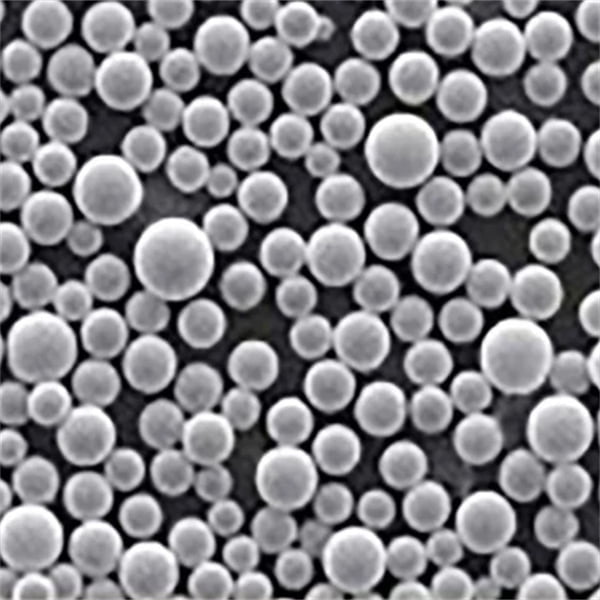
Zvažte nákup prášku pro 3D tisk
| Faktor | Popis | Dopad na tisk | Příklady |
|---|---|---|---|
| Aplikace a vlastnosti materiálu | To je základ vašeho rozhodnutí. Co budete tisknout? Zvažte mechanické vlastnosti (síla, pružnost), tepelné vlastnosti (tepelná odolnost) a chemická odolnost potřebné pro závěrečnou část. Bude to na funkční použití nebo na dekoraci? | Přímo ovlivňuje úspěšnost a funkčnost tisku. Nesprávný materiál může vést k deformaci, prasknutí nebo nesplnění zamýšleného účelu. | – Potisk pouzdra na telefon: Vyžaduje pevný, mírně pružný materiál, jako je Nylon 12 (PA12), aby byl odolný vůči nárazu. – Vytvoření ozubeného kola pro stroj: Vyžaduje vysoce pevný materiál, jako je polykarbonát (PC), který odolá namáhání. – Stavba dekorativní figurky: Vhodný je esteticky zaměřený materiál, jako je barevný pískovec. |
| Velikost a distribuce částic | Velikost a konzistence částic prášku významně ovlivňuje proces tisku. Konzistentní velikost částic zajišťuje rovnoměrné vrstvení a minimalizuje tiskové vady. | Ovlivňuje kvalitu povrchu, potiskovatelnost a požadavky na následné zpracování. Nekonzistentní velikost částic může vést k nerovnoměrnému slinování, slabým vrstvám a potřebě dalšího vyhlazení. | – Jemnější částice (< 50 mikronů) vytvářejí hladší povrchovou úpravu, ale manipulace s nimi může být složitější a vyžadují specializované tiskárny. – Větší částice (> 100 mikronů) nabízejí lepší tekutost, ale mohou mít za následek hrubší strukturu povrchu. |
| Tekutost prášku | To se týká toho, jak snadno se prášek pohybuje a rozprostírá v loži tiskárny. Dobrá tekutost zajišťuje konzistentní ukládání materiálu a zabraňuje problémům s tiskem. | Ovlivňuje potiskovatelnost a ovlivňuje hustotu a strukturální integritu finálního dílu. Špatná tekutost může vést k nerovnoměrným vrstvám, slabým spojům a potenciálním selháním tisku. | – Prášky s kulovitými částicemi mají tendenci stékat lépe než ty s nepravidelnými tvary. – Výrobci často nabízejí prášky s přísadami pro zlepšení tekutosti. |
| Slinovatelnost a bod tání | Slinovatelnost určuje, jak dobře se částice prášku spojují během procesu tisku. Bod tání ovlivňuje nastavení laseru nebo zdroje tepla, které je nutné pro správné tavení. | Rozhodující pro dosažení silných a hustých finálních partií. Nesprávné nastavení nebo materiál se špatnou slinovatelností může mít za následek slabé nebo delaminované výtisky. | – Prášky SLS (Selective Laser Sintering), jako je nylon, mají obvykle nižší body tání ve srovnání s těmi, které se používají v SLM (Selective Laser Melting) pro kovy. – Materiály s dobrou slinovatelností vyžadují menší spotřebu energie, čímž se zkracuje doba tisku a spotřeba energie. |
| Kompatibilita s tiskárnou | Ujistěte se, že vybraný prášek je kompatibilní s vaším konkrétním modelem 3D tiskárny a technologií tisku (SLS, SLA, Binder Jetting atd.). | Nekompatibilní prášky mohou poškodit tiskárnu nebo vést k neúspěšnému tisku. | – Většina výrobců tiskáren doporučuje specifické prášky pro optimální výkon. – Prodejci třetích stran mohou nabízet kompatibilní prášky, ale pro zajištění správné funkčnosti je nutný důkladný výzkum. |
| Bezpečnost a manipulace | Některé prášky pro 3D tisk, zejména kovy, mohou představovat zdravotní a bezpečnostní rizika. Zvažte nebezpečí spojená s materiálem a správnými postupy manipulace. | Chrání vaše zdraví a zajišťuje bezpečné tiskové prostředí. | – Kovové prášky mohou být hořlavé, vyžadují řádné větrání a vyžadují použití osobních ochranných prostředků (PPE). – Konkrétní pokyny pro manipulaci vždy najdete v bezpečnostním listu materiálu (MSDS). |
| Cena a dostupnost | Zvažte náklady na jednotku hmotnosti a celkový rozpočet vašeho projektu. Faktor v práškovém odpadu a potenciální možnosti recyklace. | Ovlivňuje rozpočet projektu a efektivitu tisku. | – Oblíbené materiály jako Nylon 12 jsou obecně dostupnější než speciální materiály, jako jsou kovové prášky. – Nákup většího množství prášku často přichází za zvýhodněnou cenu. |
Kde koupit prášek pro 3D tisk
| Materiál | Popis | Obvyklá cena (kg) | Maloobchodníci (USA) | Aplikace |
|---|---|---|---|---|
| Nylon 12 (PA12) | Všestranný a robustní plastový prášek, ideální pro funkční prototypy a díly pro konečné použití. Nabízí dobrou rovnováhu mezi pevností, tuhostí a odolností. | $599 – $649 (6kg) | * MatterHackers [MatterHackers Formlabs Nylon 12 Powder] | * Automobilové díly * * Převody a funkční komponenty * * Skříně a kryty * * Výroba přípravků a přípravků |
| TPU 90A | Flexibilní prášek odolný proti roztržení, vhodný pro vytváření prototypů a dílů pro konečné použití, které vyžadují vlastnosti podobné pryži. | $799 (neznámý kg) | * SourceGraphics [SourceGraphics Formlabs TPU 90A SLS Powder] | * * Těsnění a těsnění * * Zdravotní oděvy * * Rukojeti sportovního vybavení * * Prototypování elastomerových komponent |
| Sinterit PA12 Smooth V2 | Varianta prášku Nylon 12 známá pro svou hladkou povrchovou úpravu, ideální pro díly vyžadující vysokou estetickou kvalitu. | $300 (2 kg) | * Nejlepší 3D obchod [Nejlepší 3D obchod Sinterit PA12 Smooth V2 Fresh Powder] | * * Koncepční modely * * Zaklapávací díly * * Prototypy spotřebního zboží |
| Kovové prášky (např. nerezová ocel, titan) | Používá se při selektivním laserovém tavení (SLM) pro vytváření vysoce pevných a teplotně odolných kovových dílů. | * Cena se liší v závislosti na typu kovu | * 3D Powder Hub [3D Powder Hub Metal Powders] * EOS GmbH [EOS Metal Powders] * Potřeby MSE [MSE Supplies Metal Powders for 3D Printing] | * * Letecké součásti * * Lékařské implantáty * * Nástroje a formy * * Šperky |
| Anycubic DLP Craftsman Resin | Technicky nejde o prášek, ale o pryskyřici obsahující keramická plniva, používaná při polymeraci v kádi pro vytváření předmětů s keramickým povrchem. | $33.31 (neznámá hmotnost) | * AliExpress [AliExpress Anycubic DLP Craftsman Resin] | * * Architektonické modely * * Umělecké a designové prototypy * * Omezené funkční aplikace |
Kolik stojí prášek pro 3D tisk?
Cena se výrazně liší podle materiálu:
Typická cena 3D tiskového prášku
| Materiál | Cena za kg |
|---|---|
| Slitina hliníku | $25 – $65 |
| Nerezová ocel 316L | $35 – $85 |
| Nástrojová ocel H13 | $45 – $120 |
| Titanium Ti64 | $170 – $450 |
| Kobaltový chrom | $110 – $350 |
| Inconel 718 | $140 – $600 |
| PA11, PA12 | $55 – $120 |
| PEEK | $100 – $600 |
Ceny klesají při vyšších objemech nákupu. Méně běžné speciální třídy jsou mnohem dražší. Dodatečné náklady narůstají na kontroly kvality, speciální manipulaci, regulované prášky. Spolupracujte s dodavateli na optimalizaci dodávek, testovacích protokolů a obratů zásob pro váš výrobní profil a vystavení rizikům.
Výhody a nevýhody klíčových výrobců prášku
| Klady | Nevýhody |
|---|---|
| Svoboda a složitost designu | Dostupnost materiálu a cena |
| Klíčové prášky pro 3D tisk umožňují vytvářet složité geometrie a mřížkové struktury, které je nemožné nebo velmi složité dosáhnout tradičními výrobními metodami. To otevírá dveře pro inovace v oblasti odlehčení, odvodu tepla a dynamiky tekutin. | Rozmanitost kovových a plastových prášků snadno dostupných pro 3D tisk se neustále rozšiřuje, ale stále zaostává za tradičními materiály. Navíc některé vysoce výkonné prášky mohou být výrazně dražší než jejich běžnější protějšky. |
| Vynikající vlastnosti materiálu | Bezpečnost a manipulace |
| Prášky lze formulovat tak, aby bylo dosaženo široké škály materiálových vlastností, včetně vysoké pevnosti, tepelné odolnosti a odolnosti proti korozi. Díky tomu jsou vhodné pro náročné aplikace v leteckém, automobilovém a lékařském průmyslu. | Kovové prášky, zejména ty, které obsahují jemné částice, mohou při vdechování představovat zdravotní riziko. Řádné větrání a osobní ochranné prostředky jsou při manipulaci a tisku klíčové. Některé reaktivní prášky mohou být navíc hořlavé nebo výbušné, což vyžaduje speciální postupy skladování a manipulace. |
| Lehké díly | Požadavky na následné zpracování |
| 3D tisk s určitými prášky, jako je titan nebo slitiny hliníku, umožňuje vytvářet lehké díly s vysokým poměrem pevnosti k hmotnosti. To je zásadní v aplikacích, kde je snížení hmotnosti primárním zájmem, jako je letectví a protetika. | Většina 3D tištěných dílů z prášku vyžaduje určitý stupeň následného zpracování, což může přidat čas a náklady na celkový výrobní proces. To může zahrnovat odstranění nosné konstrukce, tepelné zpracování pro uvolnění napětí a techniky povrchové úpravy. |
| Rychlé prototypování a výroba na vyžádání | Dopad na životní prostředí |
| Možnost tisku přímo z digitálního souboru návrhu umožňuje rychlé prototypování nových návrhů a urychluje vývojový cyklus. 3D tisk s práškem navíc umožňuje výrobu na vyžádání, čímž se snižuje potřeba velkých zásob a minimalizuje se odpad. | Výroba kovových prášků může být energeticky náročná a likvidace odpadního prášku vyžaduje pečlivé zvážení, aby se minimalizoval dopad na životní prostředí. Pokračuje výzkum zaměřený na vývoj udržitelnějších metod výroby prášku a procesů recyklace. |
| Snížení množství materiálového odpadu | Kompatibilita tiskárny |
| 3D tisk s práškem využívá výrobní proces téměř čistého tvaru, čímž se minimalizuje plýtvání materiálem ve srovnání s tradičními subtraktivními technikami, jako je obrábění. To nejen snižuje náklady, ale také podporuje udržitelné výrobní postupy. | Ne všechny 3D tiskárny jsou kompatibilní se všemi typy prášků. Specifický práškový materiál, velikost částic a tokové charakteristiky musí být v souladu s možnostmi tiskárny, aby byl zajištěn úspěšný tisk. |
Kvalifikace a testování 3D tiskového prášku
Výrobci prášku musí ověřovat kvalitu, zatímco výrobci dílů musí ověřovat materiály:
Jak výrobci testují kovový prášek
- Chemická analýza pomocí optické emise nebo rentgenové fluorescenční spektroskopie
- Distribuce velikosti částic laserovou difrakcí
- Tvar a morfologie pomocí SEM zobrazování
- Hustota a tekutost podle standardních metod MPIF
- Mechanické zkoušení na lisovaných nebo slinutých vzorcích
- Krátké běhy prostřednictvím zákaznických tiskáren pro validaci vstupních surovin
Jak by měli koncoví uživatelé kvalifikovat materiály
- Zkontrolujte osvědčení o analýze chemie slitin
- Ověřte, že distribuce velikosti částic odpovídá pokynům tiskárny
- Otestujte průtok přes systém manipulace s práškem
- Vytvářejte zkušební díly založené na standardní geometrii, jako jsou tahové tyče
- Vyhodnoťte dosažitelnou hustotu vzhledem k vlastnostem tváření
- Posuďte mechanické vlastnosti, jako je tvrdost, pevnost v tahu na tištěných dílech
- Zkontrolujte chemickou a mikrostrukturální jednotnost pomocí mikroskopie
Jak kvalita vstupního materiálu, tak vlastnosti tištěného výstupu musí splňovat požadavky aplikace ve více výrobních sériích.
Standardy pro 3D tiskové prášky
| Aspekt | Popis | Důležitost pro úspěšný 3D tisk |
|---|---|---|
| Charakterizace prášku | Tato počáteční fáze zahrnuje analýzu fyzikálních a chemických vlastností prášku. Mezi klíčové testy patří: | Zajišťuje, že prášek je kompatibilní s vámi zvoleným 3D tiskovým procesem a poskytuje požadované vlastnosti finálního dílu. Nekonzistentní prášek může vést k tiskovým vadám, špatnému mechanickému výkonu a ztrátě času a materiálů. |
| * Velikost a distribuce částic (PSD) | Měří rozsah velikostí částic a jejich relativní množství. Ideální PSD podporuje dobrou tekutost, hustotu balení a minimalizuje segregaci během tisku. | * Ovlivňuje potiskovatelnost, povrchovou úpravu a mechanickou pevnost. |
| * Morfologie částice (tvar) | Analyzuje tvar částic prášku (kulovité, nepravidelné atd.). | * Ovlivňuje hustotu balení, tekutost a laserovou absorpci při tisku na kov. |
| * Chemické složení | Identifikuje prvky a jejich proporce v prášku. | * Rozhodující pro vlastnosti materiálu, potiskovatelnost a požadavky na následné zpracování. Nečistoty mohou bránit toku, způsobovat poréznost nebo měnit vlastnosti finálního dílu. |
| * Tekutost | Měří, jak snadno prášek teče pod vlastní hmotností. | * Ovlivňuje potiskovatelnost, tvorbu vrstev a hustotu konečného dílu. Špatná tekutost může vést k nerovnoměrným vrstvám a tiskovým vadám. |
| * Zdánlivá a kohoutková hustota | Určuje hustotu balení prášku v sypkém a poklepaném stavu. | * Ovlivňuje spotřebu materiálu, smrštění během tisku a hustotu konečného dílu. |
| Powder Bed & Printability | Tato fáze vyhodnocuje, jak se prášek chová během procesu tisku. Testy zahrnují: | Optimalizuje parametry tisku pro konzistentní a vysoce kvalitní výsledky. Nesprávné nastavení může vést k tiskovým vadám, deformaci nebo dokonce k selhání stroje. |
| * Laserová slinovatelnost/analýza taveniny (kovový tisk) | Posuzuje chování při tavení a fúzní charakteristiky prášku pod laserovou energií. | * Optimalizuje výkon laseru, rychlost skenování a rozteč šraf pro správné tavení a spojování vrstev. |
| * Analýza nanášení a přetírání | Vyhodnocuje schopnost prášku nanést do jednotné vrstvy a přelakovat po každém tisku. | * Zajišťuje konzistentní tloušťku vrstvy a minimalizuje tiskové vady, jako je delaminace. |
| Mechanické vlastnosti | Tato fáze hodnotí mechanický výkon 3D tištěných dílů z kvalifikovaného prášku. Testy zahrnují: | Ověřuje, že finální díly splňují požadavky zamýšlené aplikace. Nekvalitní materiálové vlastnosti mohou vést k selhání součásti a ohrozit funkčnost. |
| * Pevnost v tahu, mez kluzu a tažnost | Změřte schopnost materiálu odolávat tažným silám. | * Rozhodující pro díly pod napětím, jako jsou konstrukční součásti. |
| * Pevnost v tlaku | Měří odolnost materiálu vůči tlakovým silám. | * Důležité pro díly vystavené tlaku, jako jsou ložiska. |
| * Tvrdost | Měří odolnost materiálu proti promáčknutí. | * Relevantní pro odolnost proti opotřebení a aplikace vyžadující tvrdý povrch. |
| * Únavová pevnost | Hodnotí schopnost materiálu odolávat opakovanému nakládání a vykládání. | * Kritické pro díly vystavené cyklickému namáhání. |
Obavy z padělaného prášku
| Aspekt | Potenciální riziko | Příklad | Je třeba podniknout akci |
|---|---|---|---|
| Ingredience | * Neznámé nebo škodlivé látky * Nesprávné dávkování účinných látek * Absence klíčových složek | * Průmyslový mastek (spojený s rakovinou) v dětském prášku * Neúčinné léky v padělaných lécích proti bolesti * Nedostatek základních vitamínů ve falešných výživových doplňcích | * Podívejte se na úplný seznam složek na štítku * Prozkoumejte běžné padělané složky * Pokud si nejste jisti, ověřte u důvěryhodného zdroje (lékaře, lékárníka) |
| Bezpečnost | * Kontaminace bakteriemi nebo plísněmi * Nesprávné výrobní procesy vedoucí k nestabilitě produktu * Inertní plniva způsobující alergické reakce | * Podráždění kůže nebo infekce způsobená kontaminovaným práškem na make-up * Pudry, které se hrudkují nebo spékají kvůli špatné výrobě * Vyrážky nebo problémy s dýcháním z neznámých plniv v pracích prostředcích | * Zkontrolujte plomby prokazující neoprávněnou manipulaci * Nakupujte u renomovaných prodejců * Hledejte certifikace od bezpečnostních organizací |
| Účinnost | * Snížená nebo chybějící funkčnost * Nepřesná tvrzení o produktu * Žádný rozpoznatelný přínos | * Make-up prášek, který neposkytuje inzerované krytí * Sportovní nápoj v prášku s minimem elektrolytů * Neefektivní doplňky na hubnutí | * Prozkoumejte nezávislé recenze produktu * Porovnejte přísady s legitimními značkami * Poraďte se s lékařem nebo odborníkem na výživu ohledně doporučení produktu |
| Ekonomický dopad | * Ztráta příjmů pro legitimní společnosti * Financování trestné činnosti * Nekalá soutěž na trhu | * Podporuje podniky, které investují do výzkumu a vývoje * Odrazuje od nezákonných výrobních praktik * Chrání výběr spotřebitelů a standardy kvality | * Nákup od autorizovaných distributorů * Oznamte podezření na padělání příslušným úřadům * Buďte si vědomi cen, které se zdají být příliš dobré na to, aby to byla pravda |
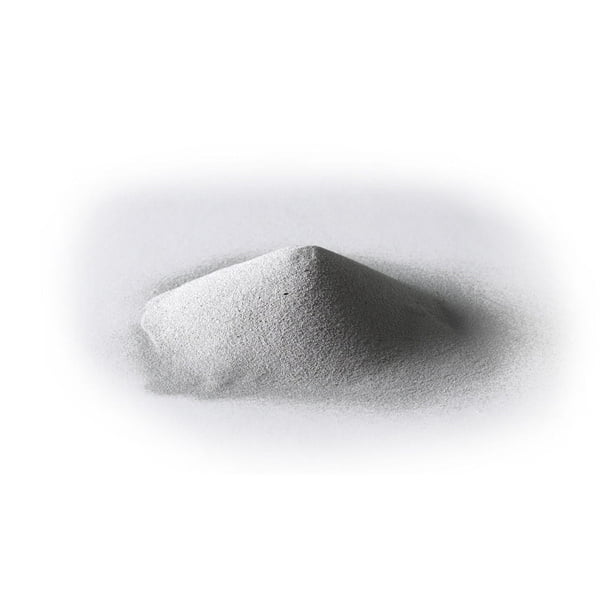
Výhled do budoucna pro trh s práškem pro 3D tisk
Průmysl je připraven na pokračující silnou expanzi:
- Širší materiály – Vyvinulo se více kovů, kompozitů a polymerů
- Vylepšené prášky – Vyšší čistota, jemně přizpůsobené vlastnosti
- Zásobovací logistika – Zvýšený počet distributorů zásob zajišťuje přístup na trh
- Snížení cen – Se zvyšujícím se přijetím klesají náklady na rozšiřující se aplikace
- Standardy kvality – Specifikace, zkušební metody umožňují záruky výkonu
Další pokrok však vyžaduje:
- Neustálé zlepšování materiálů splňující požadavky aplikací
- Výrobci OEM tiskáren ověřují nové jakosti a rozšiřují možnosti
- Hladká integrace dodavatelského řetězce zajišťující dostupnost zásob
- Techniky měření pro ověření přijatelných úrovní opětovného použití
- Definované metriky opakovatelnosti pro zajištění ochrany uživatele
S další spoluprací mezi výrobci prášků, výrobci tiskáren a výrobci koncových dílů se bude dostupnost a spolehlivost nadále zlepšovat, aby podpořila soběstačnou uživatelskou základnu.
FAQ
Kdo jsou nejlepší dodavatelé 3D tiskového prášku?
Hlavní světoví poskytovatelé jako Sandvik, Höganäs, Rio Tinto, Carpenter Powder Products, AP&C a Arcam EBM nabízejí vysoce kvalitní materiály pro většinu běžných AM procesů. To, co je „nejlepší“, závisí na konkrétní tiskárně, aplikaci, toleranci rizika a umístění.
Kde si mohu koupit malé objemy zakázkového 3D tiskového prášku?
Mnoho velkých výrobců kovových prášků nabízí objemy prototypů nových slitin. Mezi další zdroje zakázkového prášku patří mýtné zpracovatele Pyrogenesis, Pyromet a Specialty Metals Processing. Tito poskytovatelé mohou atomizovat malé dávky nových kompozic přizpůsobených vašim požadavkům.
Měl bych při získávání prášku spolupracovat přímo s výrobcem nebo distributorem?
Distributoři mohou poskytovat cenné skladování, řízení zásob a přepravní služby spolu s prášky pocházejícími od předních výrobců. To může výrazně zjednodušit logistiku. Ale můžete získat přístup k širšímu výběru materiálů, pokud budete přímo jednat s výrobci. Definujte své nejvyšší požadavky na kvalitu, riziko a služby a vyberte si optimální kanál.
Existují rozdíly mezi materiály laserových a e-paprskových tiskáren?
Ano, vyšší teplota tavení elektronového paprsku umožňuje vyšší úrovně legování, větší velikosti částic a rychlejší tvorbu. Materiály přizpůsobené pro systémy DMLM/SLM využívající lasery obvykle vyžadují mnohem přísnější chemickou kontrolu, menší částice a nižší zdánlivou hustotu. Úzce spolupracujte s prodejcem vašeho stroje, abyste přizpůsobili vhodný prášek konkrétně vašemu systému.
Sdílet na
MET3DP Technology Co., LTD je předním poskytovatelem řešení aditivní výroby se sídlem v Qingdao v Číně. Naše společnost se specializuje na zařízení pro 3D tisk a vysoce výkonné kovové prášky pro průmyslové aplikace.
Dotaz k získání nejlepší ceny a přizpůsobeného řešení pro vaše podnikání!
Související články

Vysoce výkonné segmenty lopatek trysek: Revoluce v účinnosti turbín díky 3D tisku z kovu
Přečtěte si více "O Met3DP
Nedávná aktualizace
Náš produkt
KONTAKTUJTE NÁS
Nějaké otázky? Pošlete nám zprávu hned teď! Po obdržení vaší zprávy obsloužíme vaši žádost s celým týmem.

Kovové prášky pro 3D tisk a aditivní výrobu
SPOLEČNOST
PRODUKT
kontaktní informace
- Město Qingdao, Shandong, Čína
- [email protected]
- [email protected]
- +86 19116340731






